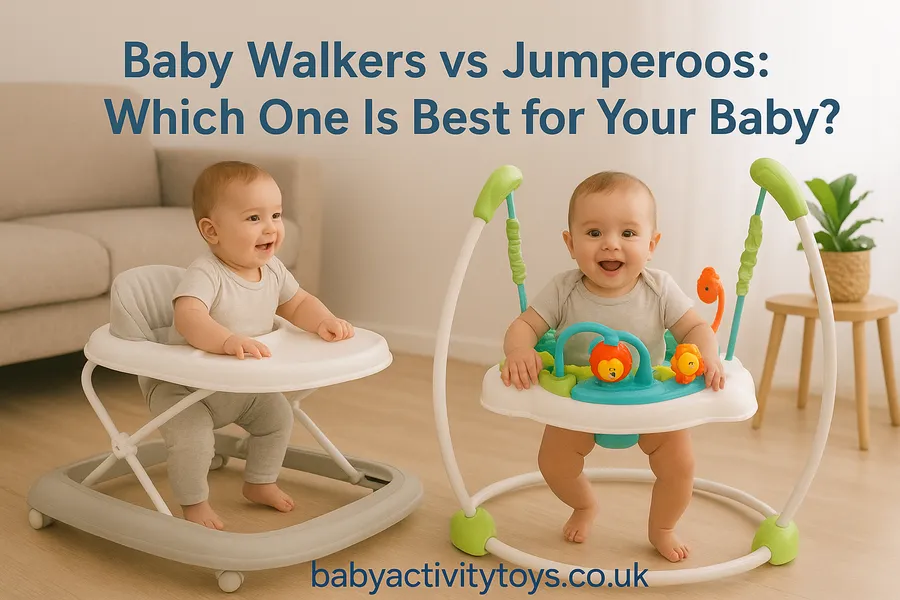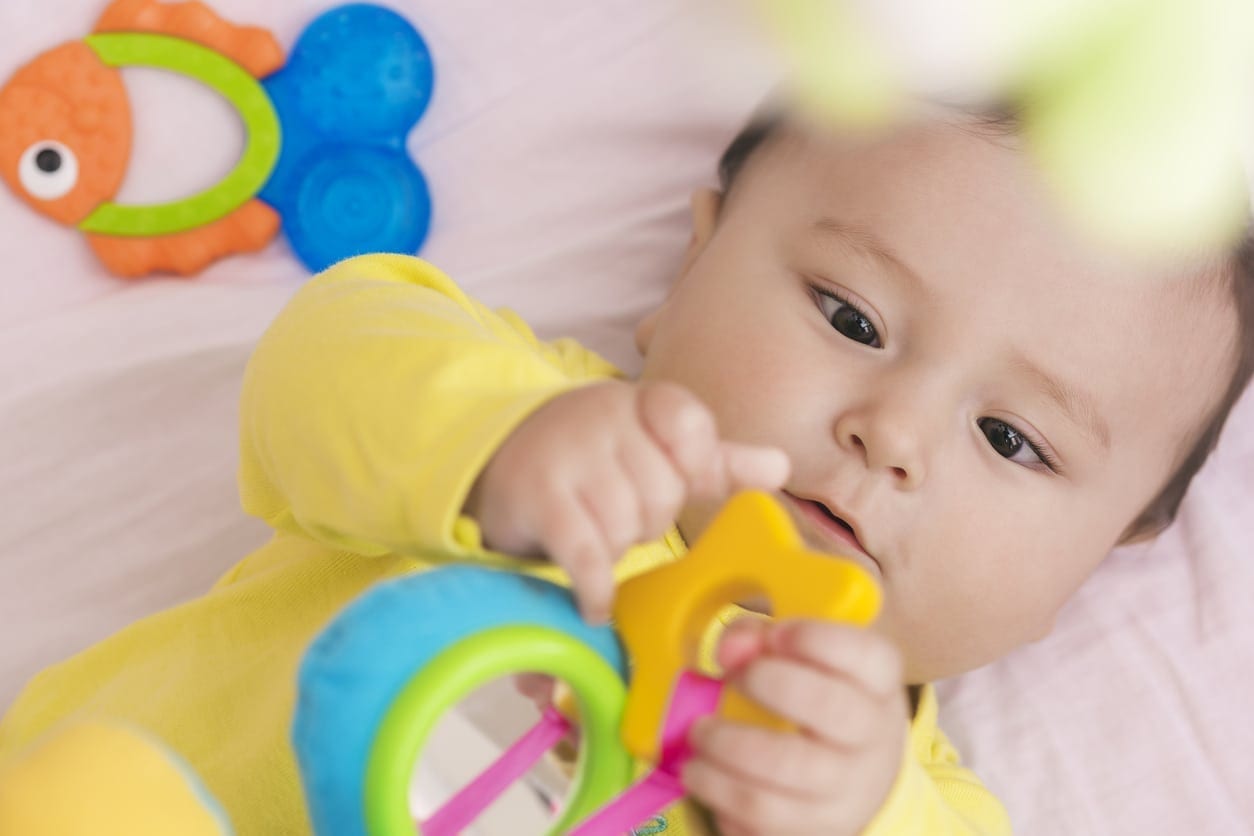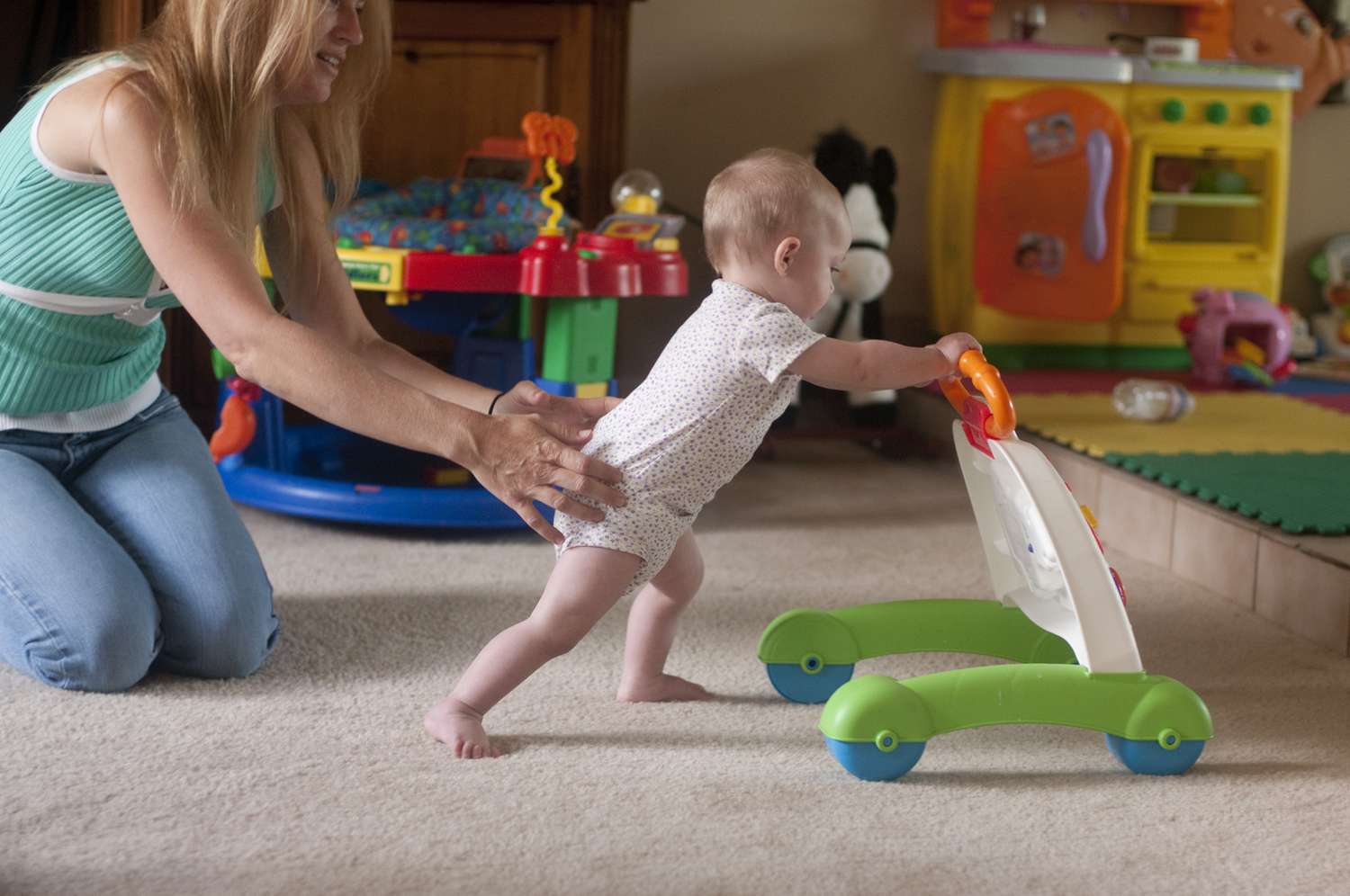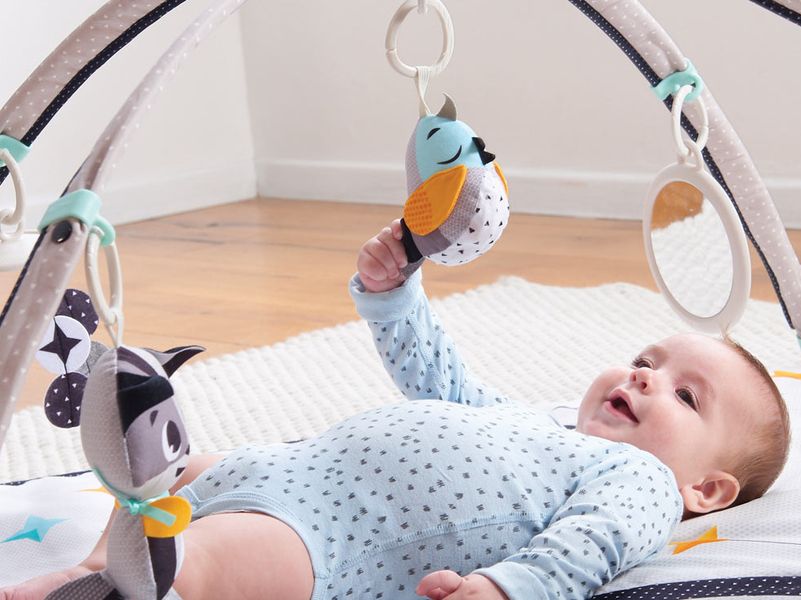
When you’re navigating the overwhelming world of baby gear, you’ve likely encountered two popular pieces of equipment: baby walkers and jumperoos. Both promise to entertain your little one whilst giving you a few precious hands-free moments, but they work in very different ways and come with distinct safety considerations. So which one should you choose for your baby – or should you avoid both altogether?
This comprehensive guide will help you understand the key differences between baby walkers and jumperoos, explore the safety concerns surrounding each, and ultimately make an informed decision that’s right for your family.

Understanding the Basics: What Are They?
Before diving into comparisons, let’s establish exactly what we’re discussing and how each product works.
What Is a Baby Walker?
A baby walker is a wheeled device with a suspended seat that allows your baby to sit upright whilst their feet touch the ground. By pushing with their feet, your baby can propel themselves around the room whilst the walker supports their weight. Traditional walkers typically feature:
- A plastic seat suspended in a rigid frame
- Four or more wheels for mobility
- A tray in front, often with attached toys
- Height adjustment settings
- The ability to move freely across floors
Some modern “activity walkers” or “push walkers” are different – these are stationary activity centres or walker toys your baby pushes whilst standing, rather than sit-in mobile devices.
What Is a Baby Jumperoo?
A baby jumperoo (also called a baby bouncer or activity jumper) is a stationary activity centre featuring a seat suspended by elastic straps or springs within a sturdy frame. Unlike walkers, jumperoos don’t move across the floor. They typically include:
- A seat suspended by springs or elastic cords
- A stable, freestanding frame
- A rotating seat allowing 360-degree movement
- Attached toys, lights, and sounds
- Height adjustment settings
- Bouncing action activated by your baby pushing off the floor
The key distinction is that walkers allow your baby to move around your home, whilst jumperoos keep them in one spot.
The Safety Debate: A Critical Comparison
When it comes to safety, these two products have vastly different reputations, and understanding why is crucial for making an informed choice.
Baby Walker Safety Concerns
Baby walkers are controversial, and many safety organisations actively recommend against their use. Here’s why:
| Safety Concern | The Risk | Statistics & Expert Views |
|---|---|---|
| Falls Down Stairs | Most serious hazard; can cause severe head injuries | Leading cause of walker-related injuries in the UK |
| Increased Mobility | Babies can reach dangerous items (hot drinks, cleaning products, sharp objects) | Moves babies into danger zones before they understand risks |
| Speed | Walkers allow babies to move at up to 1 metre per second | Faster than parents can react in many situations |
| Tipping Over | Can tip when encountering uneven surfaces, thresholds, or carpets | Common cause of injuries and falls |
| Burns & Poisoning | Extended reach allows access to cooker hobs, tablecloths, and cupboards | Significantly increases risk of serious accidents |
| Finger Injuries | Moving parts and hinges can trap small fingers | Regular occurrence in A&E departments |
The stark reality:
- Baby walkers are banned in Canada due to safety concerns
- The American Academy of Pediatrics has called for a ban on their manufacture and sale
- In the UK, the Royal Society for the Prevention of Accidents (RoSPA) advises against using them
- Thousands of babies are treated in A&E each year for walker-related injuries
The NHS states that baby walkers don’t help babies learn to walk and may actually delay this milestone. More importantly, they’re associated with serious injuries including skull fractures, broken bones, and burns.
Jumperoo Safety Concerns
Jumperoos have a significantly better safety record than walkers, though they’re not without concerns:
| Safety Concern | The Risk | What You Should Know |
|---|---|---|
| Developmental Impact | May affect natural movement patterns | Concerns centre on excessive use, not occasional use |
| Postural Issues | Can lead to poor posture if baby lacks core strength | Solvable through proper timing and positioning |
| Toe-Walking | Encourages pushing off on toes | Potential issue with extended daily use |
| Tipping | Can tip if baby reaches too far | Much less serious than walker falls; rare with proper setup |
| Time Displacement | Takes time away from floor play | Manageable through strict time limits |
The crucial differences:
- Jumperoos are stationary, eliminating the mobility-related dangers of walkers
- They don’t provide access to dangerous household items
- No risk of falling down stairs or moving into hazardous areas
- Concerns are primarily about developmental impact rather than immediate physical danger
- Proper use guidelines can mitigate most risks
Safety Verdict: A Clear Winner
From a pure safety perspective, jumperoos are significantly safer than baby walkers. Whilst jumperoos require careful use and time limits, baby walkers pose serious and immediate physical dangers that have led to bans and strong warnings from medical professionals worldwide.
Developmental Impact: What Does the Research Say?
Beyond immediate safety concerns, you should consider how each product affects your baby’s natural development.
How Baby Walkers Affect Development
The research on baby walkers and development is overwhelmingly negative:
Motor Skill Development:
- Multiple studies show walkers delay sitting, crawling, and walking
- Babies in walkers miss crucial floor time needed for developing strength and coordination
- The artificial support prevents babies from learning balance and spatial awareness
- Walking patterns developed in walkers differ from natural walking mechanics
Cognitive Development:
- Reduced floor exploration limits learning opportunities
- Less hands-and-knees crawling may impact brain development
- Restricted sensory experiences compared to natural movement
Muscle Development:
- Walkers support babies’ weight, preventing them from building necessary leg and core strength
- Babies may develop incorrect muscle patterns and posture
- Toe-walking becomes more likely with extended walker use
A landmark study published in the Journal of Developmental & Behavioral Pediatrics found that babies who used walkers:
- Sat, crawled, and walked later than babies who didn’t use walkers
- Scored lower on mental and motor development assessments
- Showed delayed development even after accounting for other factors
How Jumperoos Affect Development
The research on jumperoos is more limited but suggests a mixed picture:
Potential Concerns:
- Time spent in jumperoos is time not spent on floor play (the gold standard for development)
- Excessive use may delay crawling and walking milestones
- The bouncing motion doesn’t replicate natural movement patterns
- May encourage toe-walking if used excessively
Possible Benefits:
- Provides leg strengthening through repetitive bouncing
- Encourages hand-eye coordination through toy interaction
- Offers different sensory experiences and perspectives
- Can support social interaction when used in family spaces
The key difference: Unlike walkers, which actively interfere with development, jumperoos’ impact depends heavily on how you use them. Limited, supervised sessions as part of a varied routine are unlikely to cause developmental delays.
Developmental Verdict
Baby walkers actively interfere with natural development and offer no developmental benefits. Jumperoos, when used appropriately and in moderation, are less likely to cause developmental delays and may provide some benefits through varied activity.
Practical Comparison: Daily Use Considerations
Let’s look at how these products function in real-world family life.
| Feature | Baby Walkers | Jumperoos | Winner |
|---|---|---|---|
| Supervision Required | Constant, intensive (must watch every second) | Close supervision, but less intensive | Jumperoo |
| Space Needed | Large open areas; must remove hazards | Compact footprint in one location | Jumperoo |
| Portability | Often foldable; can move between rooms | Large and bulky; stays in one place | Walker |
| Cleaning | Fabric seat and tray removable | Multiple components; more complex | Walker |
| Storage | Usually folds flat | Takes up significant space | Walker |
| Age Range | 6-15 months typically | 4-12 months typically | Walker |
| Entertainment Value | Movement itself is main entertainment | Built-in toys, lights, sounds | Jumperoo |
| Gives Parents Break | No – requires constant vigilance | Yes – for short periods | Jumperoo |
| Setup Difficulty | Simple assembly | Moderate assembly | Walker |
| Price Range | £30-£80 | £60-£150 | Walker |
The Reality Check: What Parents Experience
With Baby Walkers:
You might think a walker will give you hands-free time, but the reality is quite different:
- You must watch your baby constantly – even a second of distraction could lead to an accident
- You need to create a completely safe zone, blocking stairs and removing all hazards
- Your baby can quickly move out of sight into dangerous areas
- The stress of constant vigilance often outweighs any convenience
- You’ll spend time chasing your baby around rather than getting tasks done
With Jumperoos:
Your experience will likely be more manageable:
- You can step into the kitchen whilst keeping an eye on your baby
- Your baby stays in one predictable location
- You have genuine hands-free time for essential tasks
- Less worry about what your baby might reach or access
- Entertainment built into the device keeps your baby engaged
- Clear time limits make it easier to ensure balanced activity throughout the day
Age Appropriateness and Usage Guidelines
Understanding when and how to use each product is crucial for safety and development.
Baby Walker Guidelines
When parents typically introduce them: 6-8 months (when baby can sit unsupported)
When they should stop: As soon as possible, preferably never
Usage recommendations from safety experts:
- RoSPA recommendation: Don’t use baby walkers at all
- NHS advice: Walkers are not recommended and don’t help babies learn to walk
- If you must use one: Maximum 15-20 minutes, only in completely safe areas with constant supervision
Red flags that indicate you should stop immediately:
- Your baby can reach countertops or table edges
- You have stairs anywhere in your home (even with gates)
- Your baby is trying to climb out
- Any near-misses or close calls occur
Jumperoo Guidelines
When to introduce: 4-6 months (when baby has strong head control and can support trunk)
| Readiness Sign | What to Look For | Why It Matters |
|---|---|---|
| Head Control | Steady head with no wobbling | Prevents neck strain |
| Trunk Strength | Can sit with minimal support | Ensures proper posture |
| Leg Interest | Pushes down when held standing | Shows readiness for bouncing |
| Foot Position | Feet reach floor flat at lowest setting | Prevents toe-walking habits |
When to stop:
- When your baby starts crawling confidently (usually 8-10 months)
- When they reach the weight limit (typically 11-13kg)
- Around 12 months maximum
Recommended usage:
- Session length: 15-20 minutes maximum
- Daily frequency: No more than twice per day
- Total daily time: 30-40 minutes maximum
- Critical rule: Never let jumperoo time replace floor time
Signs to end session immediately:
- Fussiness or crying
- Slumping or poor posture
- Fatigue (eye rubbing, yawning)
- Attempts to climb out
- Any signs of discomfort
Cost Analysis: Which Offers Better Value?
Let’s examine the financial aspect of each option.
| Cost Factor | Baby Walkers | Jumperoos | Better Value |
|---|---|---|---|
| Initial Purchase | £30-£80 | £60-£150 | Walker (but consider safety costs) |
| Usage Period | 6-9 months typically | 4-8 months typically | Similar |
| Resale Value | Low due to safety concerns | Moderate to good | Jumperoo |
| Accident Costs | Potential A&E visits, injuries | Minimal risk | Jumperoo |
| Alternative Costs Avoided | None really | Can reduce need for other entertainment | Jumperoo |
| Long-term Value | Negative (no developmental benefit) | Neutral to slightly positive | Jumperoo |
The hidden costs of baby walkers:
When considering walkers, factor in:
- Potential medical costs from accidents
- Stress and worry about safety
- Possible developmental delays requiring intervention
- Time spent creating safe environments
- The fact you can’t truly use them hands-free
The true value of jumperoos:
Consider these factors:
- Safe, genuine hands-free time for essential tasks
- Entertainment value during challenging developmental phases
- Better resale potential if kept in good condition
- Peace of mind from stationary design
- Can genuinely help during high-needs periods
What About Alternatives?
Before committing to either option, you should know about alternatives that may serve you better.
Better Alternatives to Baby Walkers
If you’re drawn to walkers for mobility and exploration, consider these safer options:
Push-Along Walker Toys:
- Your baby stands and pushes (not sits in)
- Develops balance and coordination naturally
- Encourages proper walking mechanics
- Much safer than traditional walkers
- Use only once baby can pull to stand independently
Floor Play with Strategically Placed Furniture:
- Creates natural “cruising” opportunities
- Allows baby-led exploration safely
- Develops strength and balance organically
- Costs nothing and maximizes development
Baby-Wearing:
- Gives your baby the movement and perspective they crave
- Keeps them safe whilst you move around
- Promotes bonding and security
- Supports healthy hip development
Alternatives to Jumperoos
If you’re interested in jumperoos primarily for entertainment, explore these options:
Activity Mats and Gyms:
- Encourages tummy time and reaching
- Supports natural development
- Provides sensory stimulation
- Takes up less space
Stationary Activity Centres:
- Similar toy engagement without bouncing
- Your baby sits or stands at the centre
- Safer positioning for hips and spine
- Still provides hands-free time
Simple Floor Play:
- The gold standard for development
- Costs virtually nothing
- Maximizes motor skill development
- Encourages creativity and problem-solving
Expert Recommendations: What Do Professionals Say?
Understanding what healthcare professionals and child development experts recommend can help guide your decision.
Medical and Safety Organization Positions
| Organization | Position on Baby Walkers | Position on Jumperoos |
|---|---|---|
| NHS | Not recommended; don’t help babies walk | No official position; advise moderation |
| RoSPA | Strongly advise against use | Recommend time limits and supervision |
| American Academy of Pediatrics | Call for ban on manufacture and sale | Suggest limiting use; prioritize floor time |
| Canadian Government | Banned since 2004 | No restrictions; standard safety requirements |
| Paediatric Physiotherapists | Unanimous opposition | Mixed views; emphasis on moderation |
What Health Visitors Typically Advise
When you discuss baby gear with your health visitor, you’ll likely hear:
About Baby Walkers:
- “We don’t recommend baby walkers due to safety concerns”
- “They won’t help your baby walk any sooner”
- “The risks far outweigh any perceived benefits”
- “Please consider safer alternatives”
About Jumperoos:
- “Short sessions are fine if your baby enjoys them”
- “Make sure tummy time is your priority”
- “Watch for signs that your baby is ready”
- “Don’t use them as a substitute for floor play”
- “Stop once your baby starts crawling”
Making Your Decision: A Practical Framework
Now that you understand the differences, safety concerns, and expert opinions, how do you decide what’s right for your family?
The Recommendation Hierarchy
Based on safety research, expert opinion, and developmental science, here’s the recommended approach:
Tier 1 (Best Choices):
- Floor play with age-appropriate toys
- Tummy time on activity mats
- Baby-wearing for mobility and bonding
- Push-along walker toys (once standing independently)
Tier 2 (Acceptable with Precautions):
- Jumperoos with strict time limits and proper use
- Stationary activity centres
- Supported sitting practice
Tier 3 (Not Recommended):
- Baby walkers of any kind
- Any mobile device that supports a baby’s weight before they can walk
If You Choose a Jumperoo: Your Complete Safety Checklist
If you’ve decided a jumperoo is right for your family, use this comprehensive checklist to ensure safe use.
Before First Use
Setup Checklist:
□ Assembled according to manufacturer instructions □ All screws and connections tightened □ Springs or elastic cords intact and secure □ Placed on flat, level surface □ At least 60cm clearance on all sides □ Away from stairs, doorways, and hazards □ Not on thick carpet that affects stability □ Height adjusted so baby’s feet touch floor flat
Before Each Use
Daily Safety Check:
□ Visual inspection of all springs/straps □ Check for loose toys or parts □ Verify seat fabric has no tears □ Ensure frame is stable and secure □ Confirm baby is within weight limit □ Baby shows signs of readiness (not tired or fussy) □ You have 15-20 minutes for supervision
During Use
Active Supervision Checklist:
□ Stay within arm’s reach □ Watch for signs of fatigue □ Monitor posture (should stay upright) □ Check feet remain flat (not just toes) □ Observe for overstimulation □ Set timer for 15-20 minutes □ Engage with your baby during session □ Ready to end session at first sign of distress
After Use
Post-Session Actions:
□ Note how long the session lasted □ Record any concerns about posture or comfort □ Clean toys and tray if soiled □ Check for any new wear or damage □ Ensure your baby has substantial floor time afterward □ Don’t use again until at least 3-4 hours have passed
The Verdict: Which Should You Choose?
After examining all the evidence, expert opinions, and practical considerations, here’s the clear conclusion:
Baby Walkers: Not Recommended
The evidence against baby walkers is overwhelming:
Why you should avoid them:
- ❌ Serious safety risks including falls, burns, and poisoning
- ❌ Banned in some countries due to injury statistics
- ❌ Unanimously opposed by medical professionals
- ❌ Delay developmental milestones
- ❌ Provide no actual benefits
- ❌ Don’t truly offer hands-free time due to supervision requirements
- ❌ Create more stress than convenience
The bottom line: There is no scenario where a baby walker is your best choice. Safer, more developmentally appropriate alternatives exist for every need a walker claims to address.
Jumperoos: Acceptable with Strict Guidelines
Jumperoos occupy a middle ground – not ideal, but not dangerous when used correctly:
Why they can work for some families:
- ✓ Significantly safer than baby walkers
- ✓ Stationary design prevents most serious accidents
- ✓ Provides genuine entertainment for babies who enjoy bouncing
- ✓ Offers brief periods of hands-free time
- ✓ Can be part of a balanced routine when time-limited
Critical conditions for use:
- Only if your baby shows all readiness signs
- Maximum 15-20 minutes per session, twice daily
- Constant supervision during use
- Floor time must remain your top priority
- Stop at first signs of crawling
The bottom line: If you choose a jumperoo, you can use it safely by following guidelines strictly. However, your baby doesn’t need one to develop properly, and floor-based alternatives are always better for development.
The best choice for most families:
Focus your resources and time on:
- Generous floor time – the foundation of healthy development
- Baby-wearing – for closeness and hands-free mobility
- Age-appropriate toys – for engagement and learning
- Push-along toys – once your baby can stand (instead of walkers)
If you want to include a jumperoo:
Use it as a small supplement to (never replacement for) your baby’s floor-based activities. Think of it as the occasional treat rather than a daily staple.
If You Already Own a Jumperoo
Your immediate action steps:
- Review all safety guidelines in this article
- Verify your baby shows all readiness signs
- Implement strict 15-20 minute time limits
- Ensure floor time remains your priority
- Plan to stop once crawling begins
- Use it consciously as occasional entertainment, not daily routine
When You’re Considering Buying a Jumperoo
Questions to answer first:
- Is your baby developmentally ready (4+ months with head control)?
- Can you afford to commit to strict time limits?
- Do you have space for setup and storage?
- Are you prioritizing floor time as the foundation?
- Is this truly necessary or could simpler alternatives work?
If yes to all: A jumperoo can be a reasonable purchase for occasional use
If no to any: Invest in alternatives like activity mats, push toys, or save the money
Final Thoughts: Putting Your Baby First
The baby walker versus jumperoo debate ultimately isn’t about choosing between two equal options. It’s about understanding that one is demonstrably dangerous whilst the other can be safe if used correctly.
Your baby needs you, floor time, and age-appropriate toys far more than they need any piece of equipment. The best entertainment you can provide is your presence, interaction, and opportunities for natural exploration and movement.
If you do choose to use a jumperoo, do so with full awareness of the guidelines, strict adherence to time limits, and honest prioritization of more important activities. Your baby will develop best when given freedom to move, explore, and practice skills on their own timeline.
Whatever you decide, trust yourself as your baby’s expert. You know your child, your home, and your circumstances better than anyone else. Use this information to make an informed choice that balances safety, development, and your family’s practical needs.
The goal isn’t perfection – it’s making thoughtful decisions based on the best available evidence whilst giving your baby the safe, loving environment they need to thrive.








